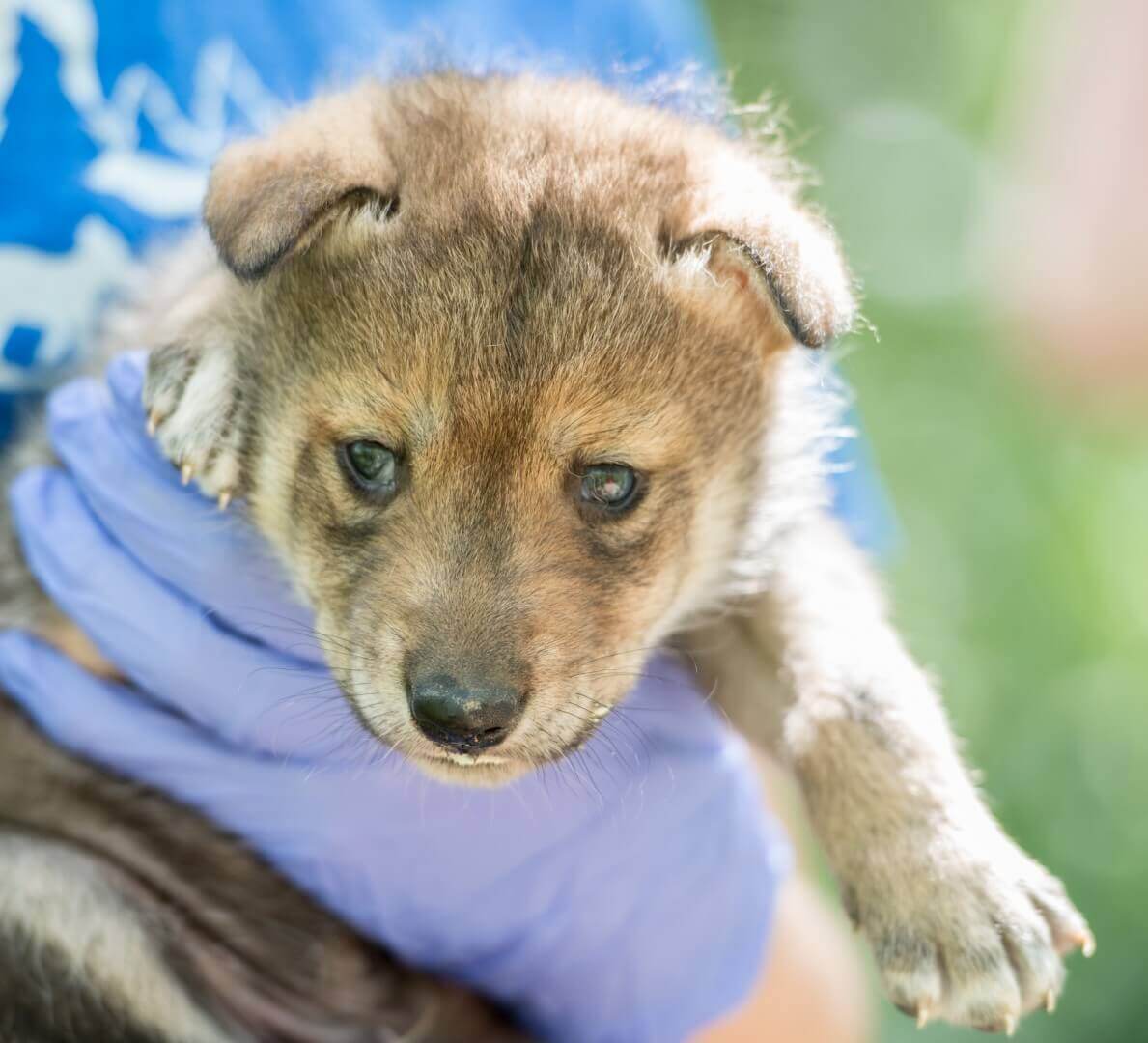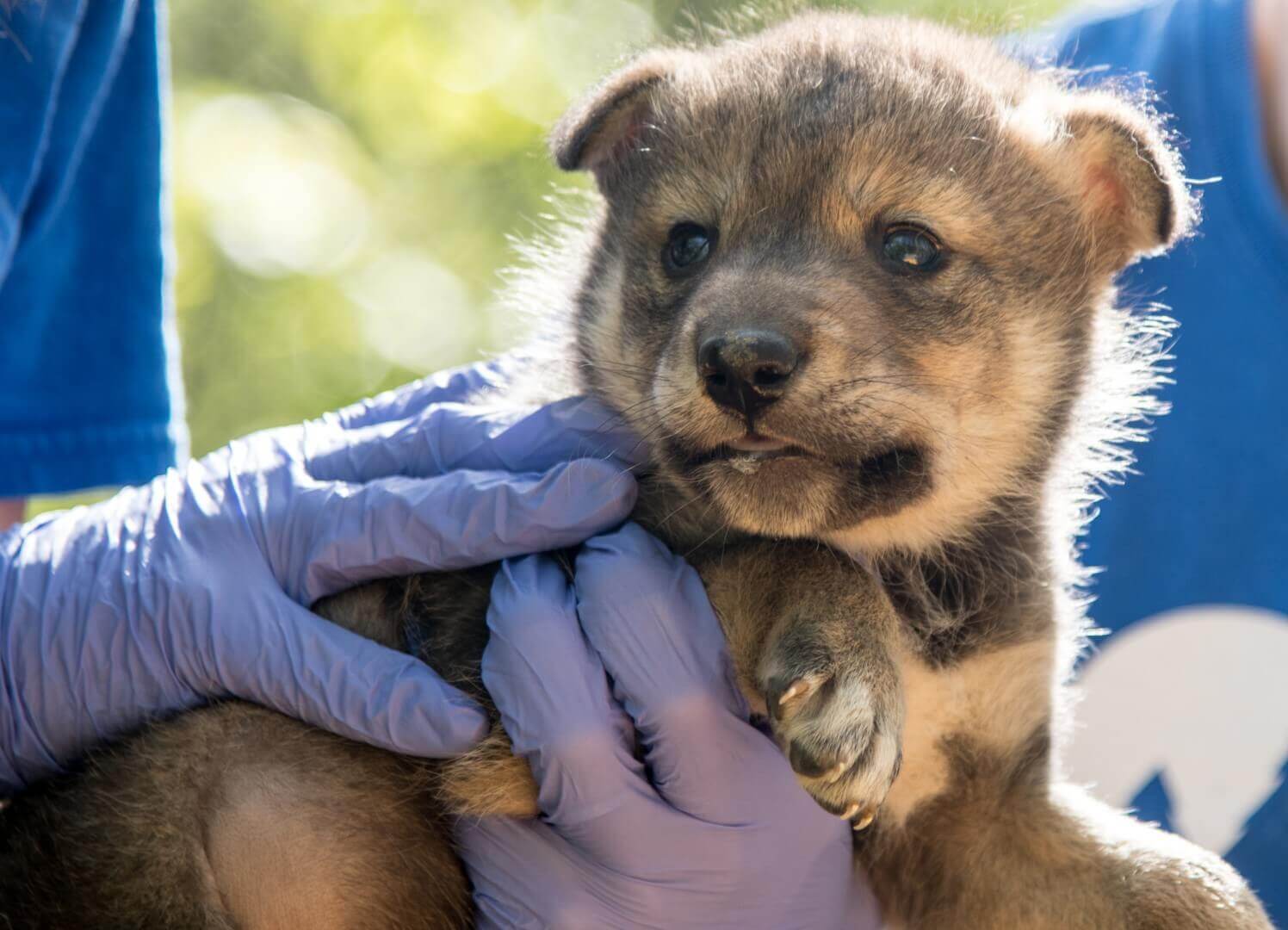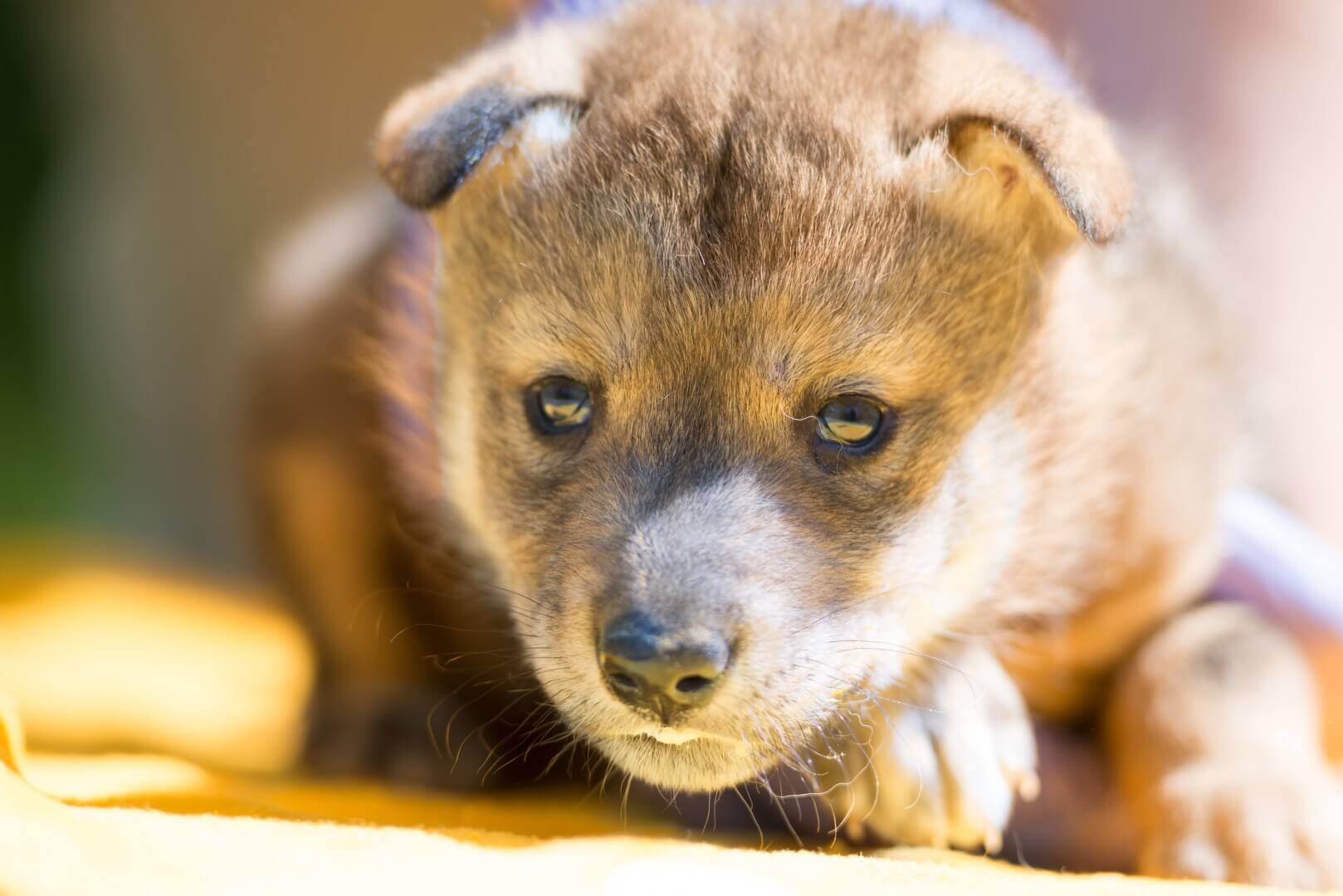Partnership of Government, Institutions Achieved Reproductive Breakthrough for Critically Endangered Species
April 2 marked a historic first in conservation. An endangered Mexican wolf, Vera, gave birth to a tiny male pup conceived by artificial insemination, using sperm that was preserved by freezing.
“This little pup offers new hope,” said Virginia Busch, Executive Director of the Endangered Wolf Center (EWC). “To succeed in conserving a species, many tools are needed in our proverbial ‘toolbox.’ Using frozen semen will help maintain the genetic and overall health of the critically endangered Mexican wolf population by allowing scientists to draw from a larger pool of genes—wolves at other institutions and also deceased individuals.”
A decrease in genetic diversity can compromise a population by increasing the incidence of low birth weights, reducing litter sizes and raising the mortality rate of pups. Reproductive technologies, such as frozen semen and artificial insemination, were developed to support gene diversity by allowing reproduction between genetically valuable individuals at different locations and even after natural death of a male.
This pup was born at the EWC using sperm collected by Saint Louis Zoo research and animal health staff in January 2015 from a male Mexican wolf at the EWC and stored at the Saint Louis Zoo’s cryopreservation gene bank—one of the world’s largest gene banks established specifically for the long-term conservation of an endangered species.
The nonsurgical transcervical intrauterine insemination of the female wolf was performed at the EWC on Jan. 27, 2017 by Dr. Bruce Christensen, DVM, Assistant Professor of Population Health & Reproduction, University of California-Davis with assistance of the Saint Louis Zoo animal health staff.
Wolves are keystone species, and as scientists have learned with the reintroduction of wolves in Yellowstone, they are a vital part of keeping the plants and animals in an ecosystem healthy. The Mexican wolf was eliminated from the wild in the United States in the 1970s and from Mexico in the1980s.
Once the captive population grew large enough, FWS launched a reintroduction program in 1998 with the release of 11 Mexican wolves into the wild in Arizona and New Mexico. Now, Mexican wolves are found mostly in the United States, in Arizona, New Mexico. In addition, there are approximately 230 captive wolves in the care of more than 50 institutions both in the United States and Mexico.
“While the captive program has prevented the extinction of the Mexican wolf, with only roughly 130 Mexican wolves in the wild today, we still have a lot of work to do to in order to recover the species,” said Peter Siminski, The Living Desert’s Director of Conservation, Chair of the SSP and a member of the Mexican Wolf Recovery Team. “We are hopeful the wild populations will benefit from these reproductive technologies, as well.”
In 1990, at the request of FWS, the Saint Louis Zoo, established a frozen semen bank for the FWS Mexican Wolf Recovery Program and the SSP. In the beginning, Dr. Asa and Saint Louis Zoo Laboratory Manager Karen Bauman and animal health team worked in collaboration with the Endangered Wolf Center to collect wolf semen to bank for potential future use from wolves housed at the Center for potential future use. But by the early 2000’s, the wolf population in managed care grew larger and the Dr. Asa and Karen Bauman expanded their collection efforts, traveling around the country to collect wolf semen to bank from many different facilities in the Species Survival Plan.
Today, the frozen zoo—or combined gene bank—located at the Saint Louis Zoo and at the Chapultepec Zoo in Mexico contains genetic materials from over 200 male and female Mexican wolves.
“The birth of a pup at the Endangered Wolf Center represents a major breakthrough and is a remarkable example of institutional collaboration between the Saint Louis Zoo, the Endangered Wolf Center (EWC), The Living Desert, the University of California-Davis, the United States Fish and Wildlife Service (FWS) and the Association of Zoos and Aquariums Mexican Wolf Species Survival Plan (SSP),” said Dr. Cheryl Asa, retired Director of the AZA Reproductive Management Center at the Saint Louis Zoo, who for more than 25 years has worked with other national and international organizations to save the Mexican wolf. The EnBusch added, “Collaboration is key to conservation success, and the Endangered Wolf Center is proud to partner with the Saint Louis Zoo, The Living Desert, the FWS, universities and all of the SSP institutions to help save this amazing wolf.”
Thanks to the work of these organizations, the howl of the Mexican wolf, missing from the landscape for more than 30 years, can once again be heard in the mountains of northwestern Mexico and southwestern United States


